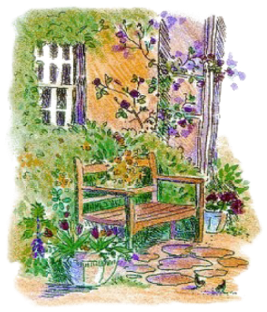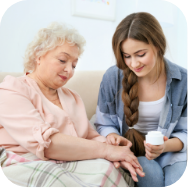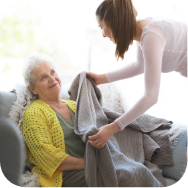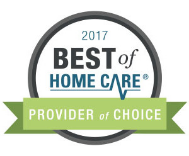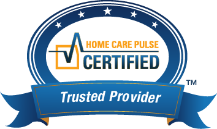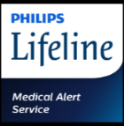What Is Seasonal Affective Disorder?

Feeling a bit glum may seem like an ordinary reaction to the fading glow of the holidays and the darker winter months. But, when that feeling of sadness persists for more than a week or two, it’s a red flag.
Seasonal affective disorder is a form of depression that cycles with the seasons. It can occur during any time of the year, but it typically affects people during the winter.
As the weather gradually gets colder and the days get shorter, people affected by winter-induced SAD will generally begin to feel the symptoms of depression. Signs of SAD include a loss of energy, changes in appetite and sleeping habits, irritability, and loss of interest in socializing and other activities.
According to the National Institute of Mental Health, SAD is more prevalent in women and people who live further from the equator, where the sun is not as strong or constant. Individuals with existing mental disorders, such as anxiety disorders, major depressive disorder, and bipolar disorder, more commonly experience the so-called “winter blues.”
The main difference between SAD and general depression is that SAD only strikes during certain times of the year. A decline in the amount of daylight during fall and winter affects circadian rhythms and causes hormonal changes that lead to depressive symptoms in people with SAD. These effects can be compounded if a person cannot or does not want to regularly spend time outdoors, which is particularly impactful to seniors who are housebound or live in areas prone to ice and snow.
Treatments for SAD
Like other forms of depression, SAD can be treated with antidepressant medications. These prescriptions take a few weeks to achieve their full effect. If a loved one is prone to SAD, it is best to begin treatment prior to the onset of symptoms each year.
A non-pharmaceutical option for alleviating the symptoms of SAD is bright light therapy. Bright light therapy utilizes a piece of equipment called a “light box,” which is essentially a fluorescent lamp that emits a spectrum of light intended to simulate natural sunlight. A good quality light box will come with a filter that blocks harmful UV rays, so the light does not damage a person’s eyes or skin.
Research has shown that, when used properly, a light box can decrease the amount of melatonin (a hormone that is typically produced at night and causes drowsiness and lethargy) circulating in a person’s body during the day and regulate the neurotransmitters serotonin and epinephrine. Having an imbalance of these chemicals can intensify symptoms of depression.
If an aging loved one has been diagnosed with SAD, their doctor may instruct them to sit in front of a light box for 30 to 45 minutes a day, usually in the morning, in order to make up for the lack of sunlight many people experience during winter. Although it is not always the go-to treatment for SAD, some studies have shown that light therapy has the potential to be as effective as antidepressant medication.
Of course, a more natural alternative to light therapy is daily exposure to sunlight. If time, physical health and weather conditions permit, it would be beneficial for a person with SAD to go outside for a few minutes each morning to soak up some sun. Every little bit helps.
Seasonal Affective Disorder and Vitamin D Deficiency in Seniors
Research shows that vitamin D plays an increasingly important role in physical and mental health. This vital nutrient has been linked to bone and heart health, cancer and diabetes prevention, and increased immune function.
Vitamin D deficiency can have negative health consequences for a person of any age, but it can be particularly dangerous for older adults. Symptoms of vitamin D deficiency are very subtle and can include muscle and bone pain, excessive fatigue, and depressed mood. Seniors who don’t get enough vitamin D are at an increased risk of developing osteoporosis—a dangerous decrease in bone density that can contribute to broken bones.
The National Institutes for Health (NIH) has identified elderly people as an at-risk group for vitamin D deficiency. Not only do changes in diet often eliminate foods rich in vitamin D from a senior’s meal choices, but aging bodies have more difficulty converting and absorbing vitamin D from foods.
Additionally, older bodies are less efficient at using sunlight to produce vitamin D, and seniors are more likely to have mobility limitations that prevent them from getting outside to get enough sun exposure. Studies have shown that seniors’ vitamin D levels tend to drop during the winter months when the days are shorter, and the sun is at a lower angle in the sky—two factors that are not conducive to synthesis in the skin. Furthermore, certain medications, such as the anti-inflammatory prednisone, can inhibit the ability to produce and metabolize vitamin D.
How to Increase Vitamin D Levels
A simple blood test is used to diagnose vitamin D deficiency, but it can be tricky to treat this condition. Doctors are reluctant to prescribe extra time in the sun to a group of people prone to developing skin cancer, and it can be difficult to determine proper dosages for supplementation.
The safest way to treat or prevent deficiency is to ensure a senior eats food fortified with vitamin D. A person can obtain vitamin D naturally by eating beef liver, egg yolks, cheeses, and fatty fish like salmon. Certain varieties of milk, yogurt, cereals, and juice are fortified to contain extra doses of the vitamin, but not so much as to pose a hazard to a person’s health.
Consult a Doctor About Treatments for SAD
If you believe an aging loved one may be experiencing something more serious than the fleeting winter blues, encourage them to meet with their doctor to determine if SAD and/or vitamin D deficiency may be to blame. Even non-pharmaceutical treatments like some of the ones discussed above are not necessarily a good fit for everyone. Seniors often have existing medical conditions and take many medications—factors that can complicate diagnosing and treating new health concerns. A physician will work with you both to devise an appropriate course of treatment that will help your loved one improve their mood and energy levels so they can feel like themselves again.
If your loved one is in need of some assistance this Winter season, contact Caring Companions At Homeat 888-950-0750 for a free in-home assessment by one of our qualified Case Managers.


